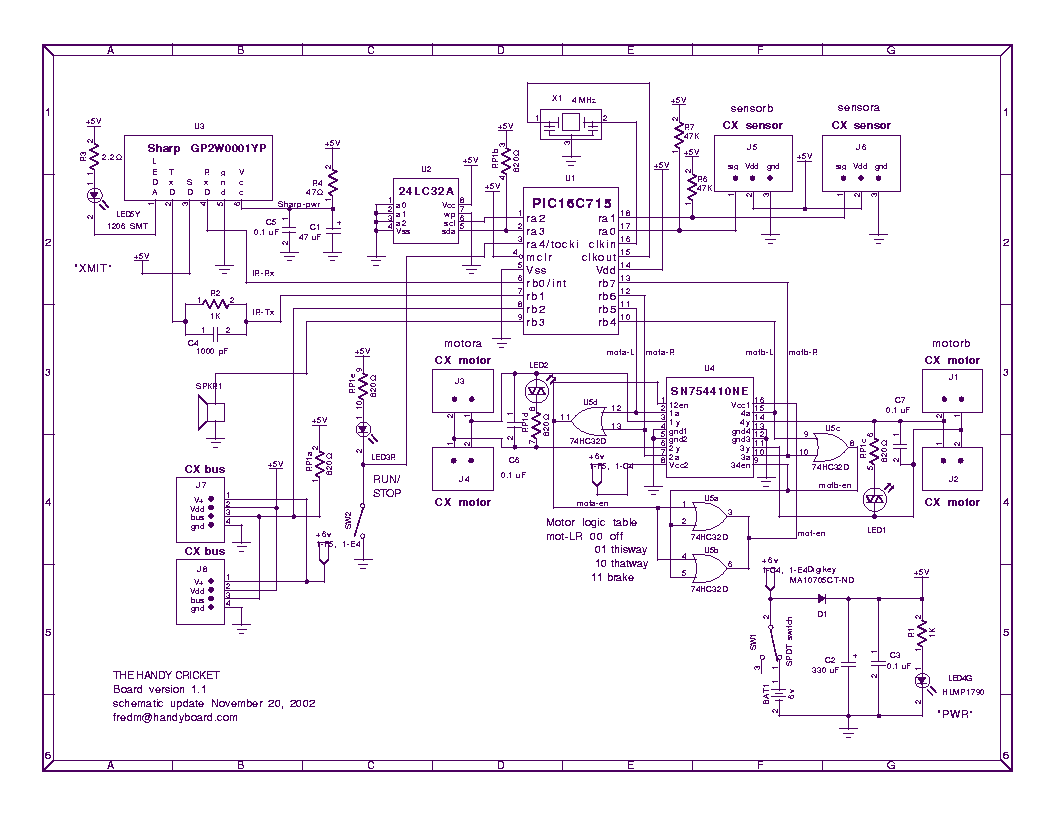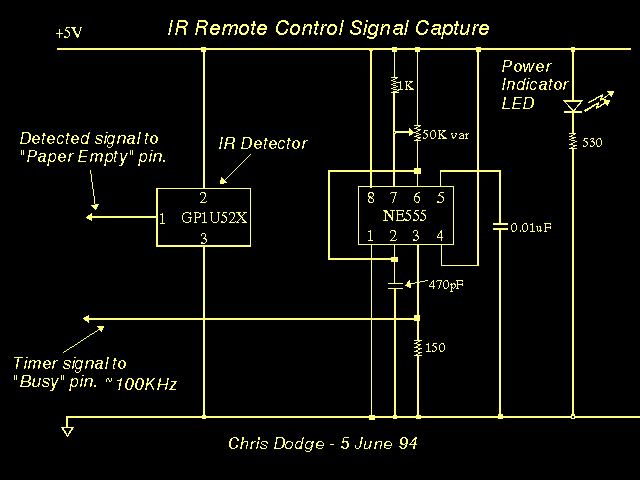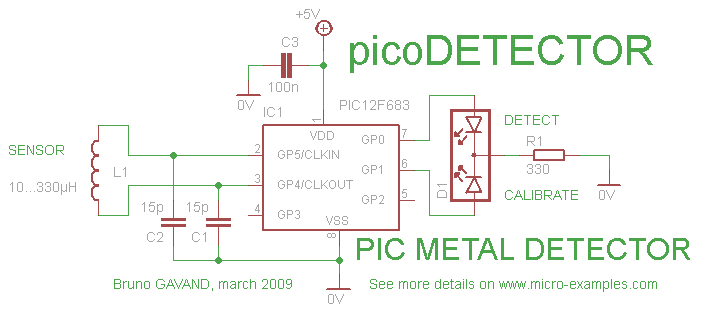
Handy Cricket Hardware Description

This document presents an overview of the hardware design of the Handy Cricket.
The Handy Cricket is a compact electronic device designed for educational and recreational purposes, primarily aimed at children. The hardware design incorporates various components that work together to provide an interactive experience. Central to the device is a microcontroller, which serves as the brain, executing programmed instructions and managing input/output operations.
The schematic includes a power supply section that typically consists of a battery or a rechargeable power source, ensuring portability. Voltage regulators may be incorporated to provide stable operating voltages for the microcontroller and peripheral components.
Input mechanisms such as buttons or touch sensors allow users to interact with the device. These inputs are connected to the microcontroller's GPIO (General Purpose Input/Output) pins, enabling the device to respond to user actions.
Output components may include LEDs, speakers, or motors, which provide feedback or perform actions based on user inputs. The schematic would detail the connections from the microcontroller to these output devices, typically through driver circuits to handle the required current and voltage levels.
Communication interfaces, such as I2C or SPI, may be included to connect additional sensors or modules, expanding the device's capabilities. For instance, a Bluetooth module could be integrated for wireless communication, allowing the Handy Cricket to interact with smartphones or tablets for enhanced functionality.
Overall, the hardware design of the Handy Cricket emphasizes simplicity and user-friendliness while ensuring that the device remains robust and versatile for various applications.This document presents an overview of the hardware design of the Handy Cricket. 🔗 External reference
The Handy Cricket is a compact electronic device designed for educational and recreational purposes, primarily aimed at children. The hardware design incorporates various components that work together to provide an interactive experience. Central to the device is a microcontroller, which serves as the brain, executing programmed instructions and managing input/output operations.
The schematic includes a power supply section that typically consists of a battery or a rechargeable power source, ensuring portability. Voltage regulators may be incorporated to provide stable operating voltages for the microcontroller and peripheral components.
Input mechanisms such as buttons or touch sensors allow users to interact with the device. These inputs are connected to the microcontroller's GPIO (General Purpose Input/Output) pins, enabling the device to respond to user actions.
Output components may include LEDs, speakers, or motors, which provide feedback or perform actions based on user inputs. The schematic would detail the connections from the microcontroller to these output devices, typically through driver circuits to handle the required current and voltage levels.
Communication interfaces, such as I2C or SPI, may be included to connect additional sensors or modules, expanding the device's capabilities. For instance, a Bluetooth module could be integrated for wireless communication, allowing the Handy Cricket to interact with smartphones or tablets for enhanced functionality.
Overall, the hardware design of the Handy Cricket emphasizes simplicity and user-friendliness while ensuring that the device remains robust and versatile for various applications.This document presents an overview of the hardware design of the Handy Cricket. 🔗 External reference





